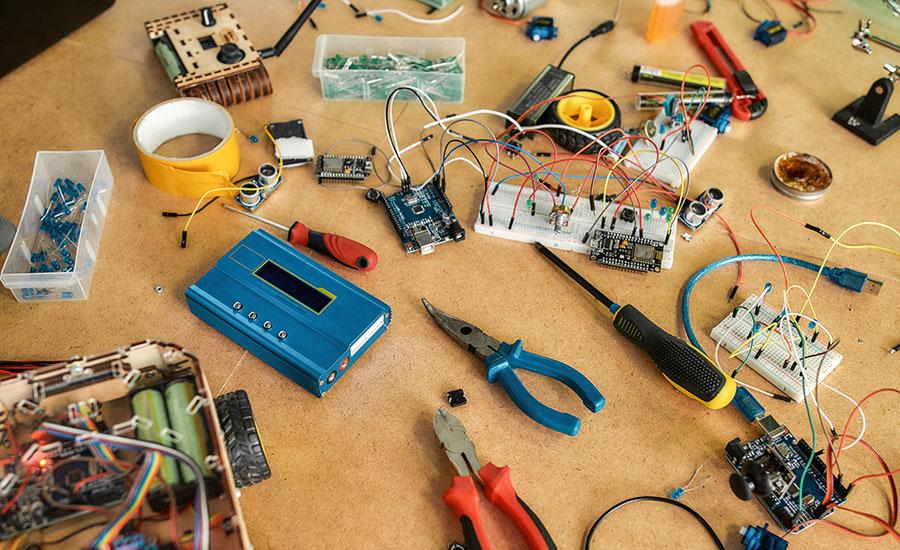Students will explore the concepts of sound and rhythm through a STEM-focused lesson plan that integrates science, technology, engineering, and math (STEM) with music. Students will engage in hands-on
Students will investigate the properties of different types of matter and apply the concept of "P1: Matter" to design, model, and 3D print an object using a MakerBot 3D printer. Hands-On STEM Design
Students are introduced to the current teams and given a brief history of their mascots. Then students research potential areas for an expansion team to start a new team (I do not limit them to just
Have you ever wondered what the real reason was as to why Galaga was such a popular arcade game? Look no further this lesson has you covered. Students will create their very own modern version of
MS MakeCode is the perfect stepping stone into the world of Scratch. Students will be able to create a working video game in one class period. As we all know classic video games were not built over
In this hands-on engineering and science project, students will become earthquake engineers tasked with designing and constructing earthquake-proof structures using toothpicks and mini marshmallows
In this multi-day lesson students will learn about prosthetics, design and build a model of a prosthetic limb, research prosthetics today and then have a Socratic Seminar to both share and debate
This lesson plan helps students understand exponential functions by using an LED circuit. LED luminosity decreases at an exponential rate as more are added in series. As students add more lights to
This lesson helps students understand the properties of 3D solids from their 2D base shapes and teaches them how to use CAD software to build their own 3D models of real world objects by breaking them
Students will read and respond to the story, I Am Not Just A Scribble by Diane Alber. Students will work with a peer or small groups to build a ScribbleBot using renewable materials and two AA
In this lesson designed for 7th grade, students will explore increasing and decreasing magnetic field of electromagnets by changing the iron core, wire gauge, or wire coils to determine which variable
Students will understand the concept of levers as simple machines and will identify and classify everyday objects as levers. Students will apply basic mathematical concepts to measure and compare the
It can be challenging to sort through the various robot options out in the market for educators. This lesson is for educators who have used robots or are new to using robots. The intention is to use
This lesson introduces students to TinkerCAD and has them create simple shapes that measure at a given ratio. The students then print and measure their design to see how close they were able to get to
After becoming familiar with the factors that affect lift from the previous Flight Basics lesson and going over key weather concepts from this lesson, students will be expected to make a device to
This lesson was developed to spark student interest with a game component while learning to use the features in productivity applications and Canva. The focus is on learning the applications and
Upon completion of this lesson, the student should know: • The relationship between Bernoulli's Principle and Newton’s Laws of Motion and how they were used to develop a machine that could fly. • The
Students learn about the chemistry that exists in some of the world's oldest surviving paintings. This lesson is the final part of a 3 part painting series, and focuses on binding agents in paint
This lesson was developed to spark student interest with a game component while learning to use the features in productivity applications. The focus is on learning the applications and process of game
Using The Wild Robot by Peter Brown as provocation, students will develop a project integrating math, science, engineering and ELA standards. Students will build a robot prototype and take it through
This lesson is part 2 of 2, Days 3 and 4. This lesson is set up to have students explore the friction bridge designed by Leonardo Da Vinci. Students have discovered the inventor and become familiar
A middle school STEM lesson using art to introduce slope.
This lesson is part 1 of 2. This lesson is set up to have students explore the friction bridge designed by Leonardo Da Vinci. Students first discover the inventor and become familiar with his life
This lesson will help students learn how to code on micro:bits and create on this mini coding board. Students do not need the physical micro:bit to complete this lesson. On the website, there is a
Featured Lesson Plans
Check out these notable lesson plans.

A Very Hungry Robot: Lesson 2

Students will gain knowledge about Arizona's geography, culture, and history through the book "Santa is Coming to Arizona." Students will develop basic programming and problem-solving skills by

Zippy the Elf's Zipline Zone
In this Engineering Design lesson, students use an inclined plane to create a safe and exciting zipline park for Zippy the Elf. This lesson reviews simple machines and has students explore the concept
